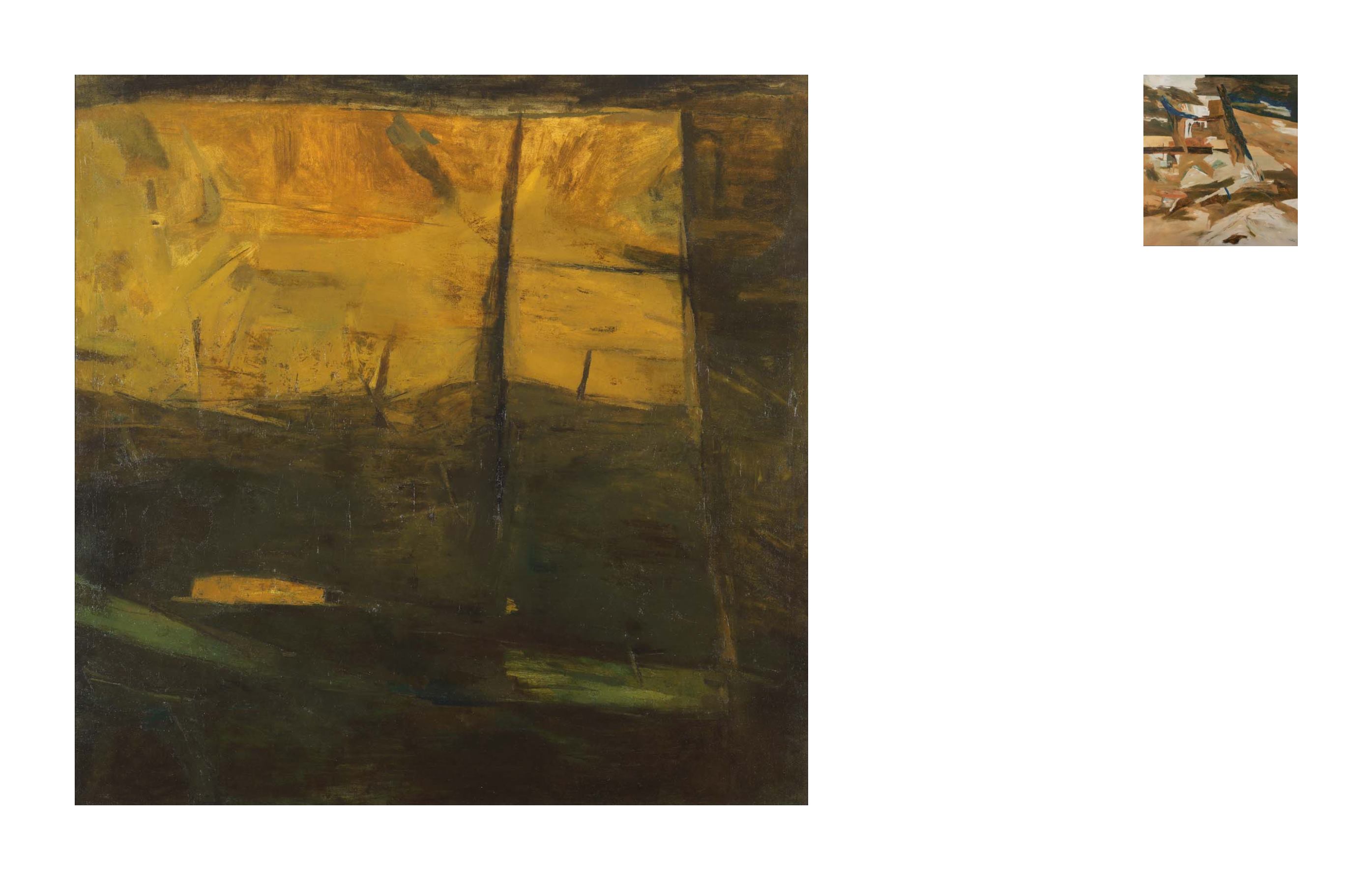

134
135
74
RAM KUMAR
(b. 1924)
Untitled
Signed and dated ‘RAM KUMAR 70’ (on the reverse)
1970
Oil on canvas
49.25 x 49.25 in (125.4 x 125.4 cm)
Rs 65,00,000 ‒ 85,00,000
$ 97,015 ‒ 126,870
PROVENANCE:
Delhi Art Gallery, New Delhi
EXHIBITED:
India Modern: Narratives from 20
th
Century Indian Art
,
New York: DAG Modern, 18 March ‒ 6 June 2015; New
Delhi: DAG Modern, 13 July ‒ 12 September 2015
After a brief period when he painted
figurative works in the 1950s, Ram Kumar
turned towards landscapes, which gradually
became abstract in form and technique
as the artist’s vision evolved. According to
critic Richard Bartholomew, “In the period
from 1960‒64 Ram alternated between
the “literary” and the “pure” styles of
abstraction. Colour and the complexity
of imagery determined the mood of the
painting. The years from 1960‒64 comprised
a predominantly “grey” period, the sternest
and the most austere in his career. Using
the encaustic process Ram even delved into
shades of black. Greys derived from blues
and browns set off the facets of the textures,
the drifts, the engulfed landforms, the
isthumus shapes and the general theme of
the fecund but desolate wasteland.” (Gagan
Gill ed.,
Ram Kumar: A Journey Within
, New
Delhi: Vadehra Art Gallery, 1996, p. 30)
Kumar’s works from the 1960s, especially the
well‒known, early Benaras ones, were semi‒
representational, depicting architectonic
elements—houses, passages, the iconic
ghats
—and relied heavily on Cubist
principles. This period turned into one of
pure abstraction after the 1970s: “Instead
of depending on textural effects and the
vitality of the variegated detail, built up
carefully with the spatula, Ram now depends
on colour planes, and multiple perspectives
in which colour is daringly and dynamically
used, often very thin, and almost like a wash,
and not as a foil for textural effects but as
a kind of sprung rhythm that tensions the
theme and carries within its body its own
symbolism.” (Gill, p. 31)
The present lot, is painted in muted tones
similar to his ’60s grey works, but rendered
in the patchwork quilt‒like colour planes
of his later paintings. According to art critic
Meera Menezes, “...the outer landscape
would transform itself into the inner
mindscape, which in turn would manifest
itself on canvas and paper. The moods
and sensations that were evoked in him
by his meditation on the outer world
would play out as colours and textures.”
(Meera Menezes,
Ram Kumar: Traversing
the Landscapes of the Mind
, New Delhi and
Mumbai: Saffronart, 2016, p. 13)
Ram Kumar,
Untitled (Landscape)
, 1986
Saffronart, New Delhi, 5 September 2014
Sold at INR 72 lakhs (USD 120,000)


















